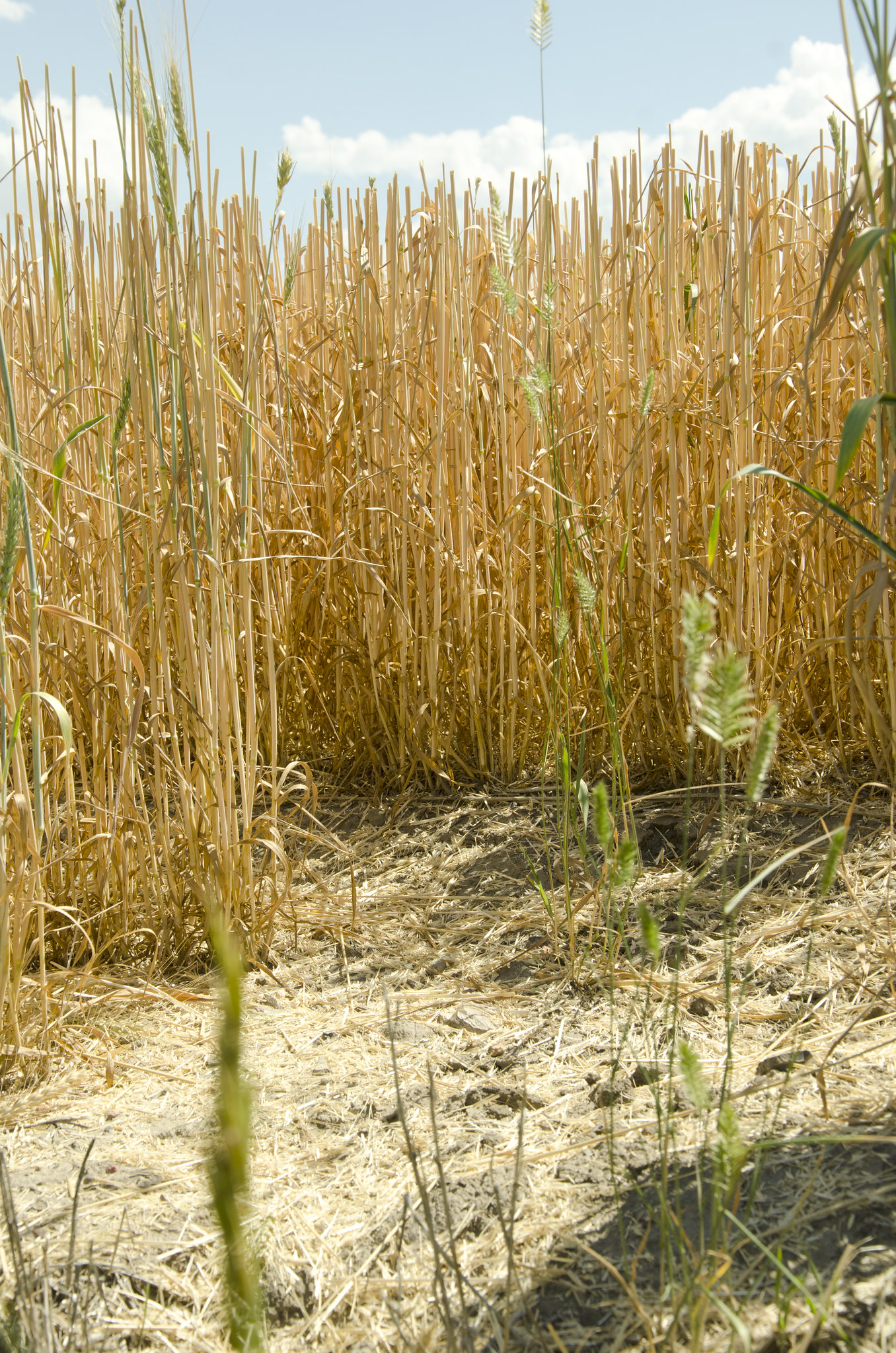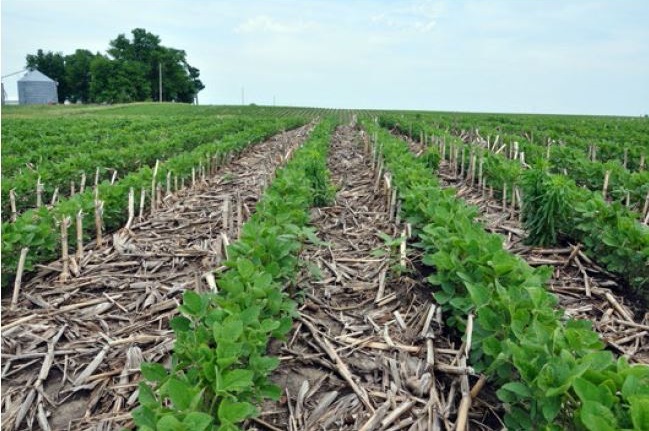Estimated reading time: 4 minutes
What Is No-Till Farming?
In no-till farming, farmers do not till their fields before planting. Instead, they use specialized equipment to create a channel that is just spacious enough for seeds to be planted, minimizing soil disturbance. Conventional tillage can leave soil vulnerable to wind and water erosion, high temperatures, and moisture loss. No-till can minimize wind and water erosion and protect soil from high temperatures and moisture loss. In addition, organic matter from previous crops enriches the untilled soil. No-till can also reduce annual fuel and labor costs on farms.
For over a century, conventional tillage (the mechanical mixing and turning of the soil with a plow or other implement to prepare a field for planting) has been the standard for many farmers. Though conventional tillage warms cool spring soils and manages weeds, it also increases soil erosion and nutrient runoff, which can impact crops, water, and air quality. The Dust Bowl in the central United States was caused by drought and the overuse of conventional tillage. Conventional tillage releases greenhouse gases stored in the soil and uses more fuel to plow fields. In 2020, 11% of greenhouse gas emissions in the United States came from agriculture, a 6% increase from 1990. The increase of greenhouse gas emissions contribute to intensifying climate change.
Farmland in many parts of the world is increasingly vulnerable to the impacts of climate change, including drought, changes in precipitation, extreme weather events, and the loss of pollinators. Farmers are increasingly likely to observe decreased crop yields and crop quality, heat stress for livestock, plants, and workers, disease and pest outbreaks, changes in water availability, and soil erosion.

Strengthening Climate Resilience
Enhancing Soil Health: No-till systems enrich the soil with organic matter, increase soil water-holding capacity, and protect crops during periods of drought and flooding. The crop residue left on the soil surface also prevents wind and water erosion, benefitting water and air quality. In some cropping systems, soil erosion can be dramatically reduced using no-till.
Soil is a complex system of living and non-living elements. Soil contains a microbial biomass of fungi, bacteria, and fine roots that aggregate (collect) and store nutrients for plants. Conventional tillage breaks up soil aggregates and reduces the soil microbial biomass. Because no-till farming does not break up soil by plowing or turning it, soil microbial biomass remains undisturbed and intact. In addition, no-till benefits predatory insects that can enhance pest control.
Reducing Emissions: No-till farming reduces the number of times a tractor must move across the field, reducing fuel consumption. In 2016, U.S. farmers who used no-till saved over 812.4 million gallons of fuel—enough energy to power over 3.2 million households in the U.S. for a year. While conventional tilling releases carbon stored within the soil, no-till keeps more carbon locked beneath the surface of the soil.
Enhancing Food Security: Because no-till can improve crop performance while reducing greenhouse gas emissions and soil erosion, it contributes to global food security.
Economic Benefits for Farmers: Since no-till farming does not require repeated plowing, fuel usage, equipment maintenance costs, and associated labor can be reduced. Water retention and soil health improve, increasing crop performance.
Challenges of No-till:
- Specialized equipment: In no-till fields in the spring, soil can warm and dry more slowly than in tilled fields, which can delay planting. Row cleaners on a planter can reduce these impacts. In addition, climate change is likely to accelerate spring warming, which may reduce the need for row cleaners in no-till operations. No-till also requires some different equipment than conventional tillage, including specialized seeding equipment like seed drills, which can be costly for producers.
- Can use more herbicides: No-till does not eliminate weeds through a tillage process, so more herbicide is often used in comparison to conventional tillage. Some no-till alternatives that can help to eliminate weeds are winter cover crops, soil solarization, and burning.
- Limited to specific crops: Some crops, like onions and wheat, do not produce as prolifically in a no-till system. However, farmers can use other forms of conservation tillage, like strip tillage, to serve a similar purpose.
Conservation Tillage

Some farmers may not be able to make year-round no-till work in their systems or on portions of their land. These farmers can consider other types of conservation tillage systems. Seasonal no-till farming is when soil is tilled once every two years or less, which reduces soil erosion, nutrient runoff, and greenhouse gas emissions. Ridge tillage is a system in which a farmer builds ridges or raised beds in order to reduce erosion and retain water. Ridge tillage has the added benefit of providing better drainage and warming cold spring soils more rapidly. Strip tillage involves the plowing of narrow strips where seeds will be planted. The soil between strips is undisturbed. Strip tillage pairs the benefits of conventional tillage, including enhanced soil drying and warmth, with the benefits of no-till, including reduced soil erosion and nutrient runoff. Mulch tillage involves the use of conventional tillage, however, after the soil is tilled, plant materials are scattered over the soil to cover the surface, reducing soil erosion and conserving heat and moisture. Each of these conservation tillage practices minimizes the impacts of soil erosion and nutrient runoff, and to varying extents could limit the emission of greenhouse gases from agricultural lands.

